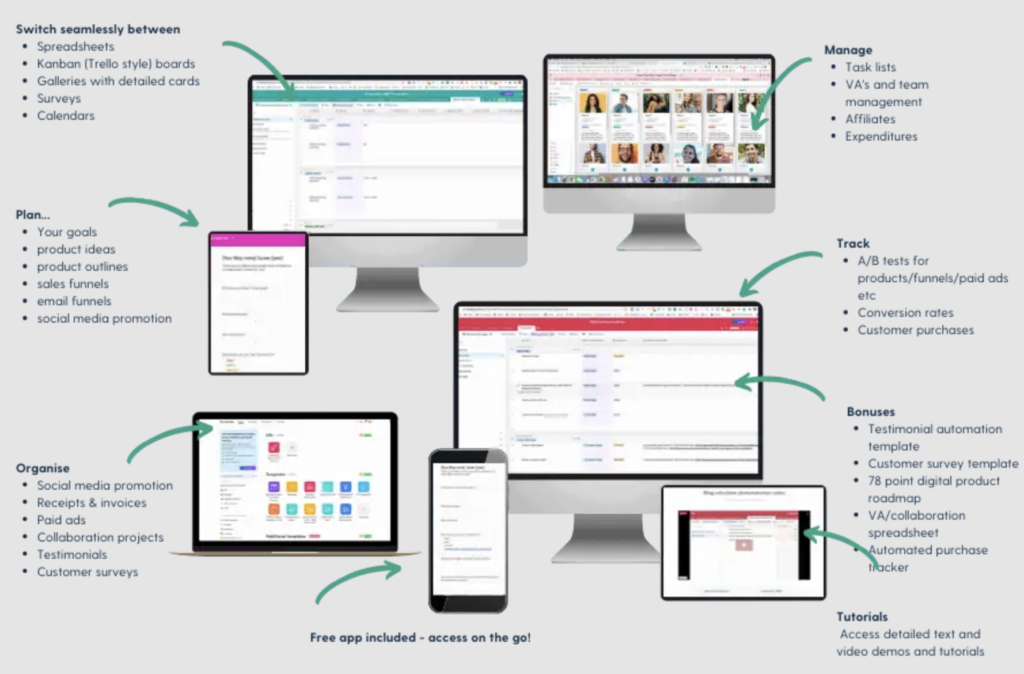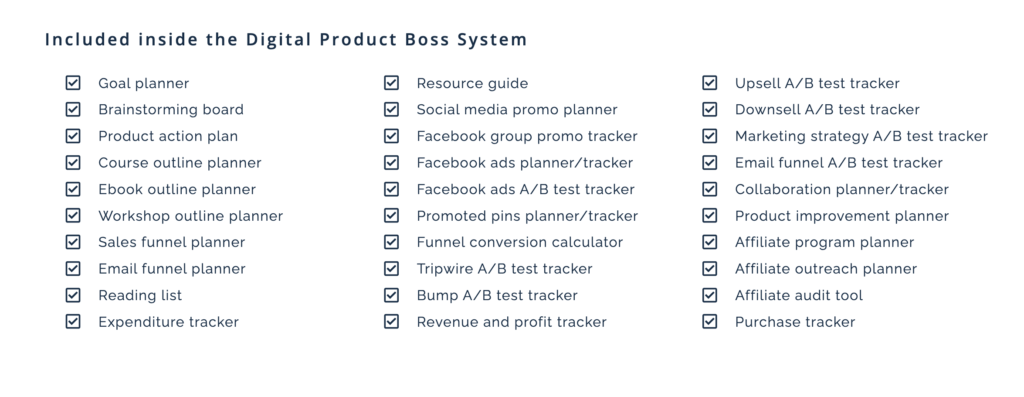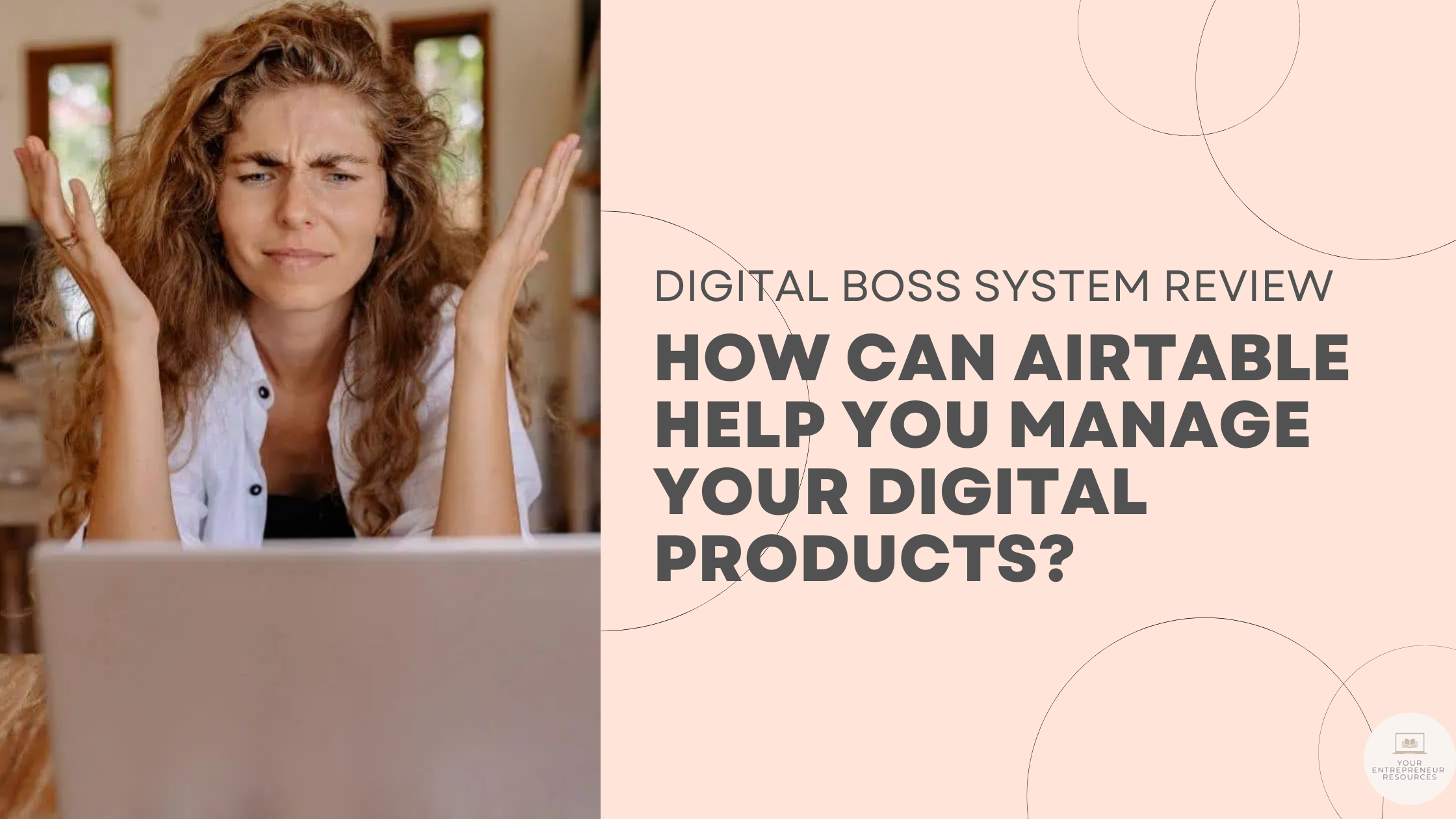
The digital product space continues to grow in 2025, with Statista projecting global digital media revenue to exceed $700 billion this year. Entrepreneurs are constantly looking for tools that can simplify product management, streamline systems, and improve income potential. The Digital Boss System claims to do just that. After researching how it works and how Airtable plays a role, I found that the system combines structured guidance with flexible tools to help creators set up, track, and scale digital products.
Airtable is at the heart of this setup because it acts as both a database and a project manager in one. Instead of juggling spreadsheets, sticky notes, and cloud folders, Airtable keeps products, sales funnels, and marketing assets in one accessible space. This structure is what makes the Digital Boss System appealing to those who want clarity without building a complex tech stack from scratch.
In this Digital Boss System review, I believe the structure it offers can give creators a real advantage in earning more from their digital product business.
Table of Contents
The Digital Boss System Review: Pros and Cons
Pros
- Step-by-step guidance for beginners in the digital product space
- Airtable templates that remove the guesswork in organizing products
- Integrates with tools like Zapier, Google Drive, and email platforms
- Helps track both product creation and sales performance in one place
Cons
- Airtable has a learning curve for those unfamiliar with databases
- Templates may feel restrictive if you prefer full customization
- The program cost can be high for side-hustlers with small budgets
- Community support is limited compared to larger digital product courses
4 Ways Airtable Can Help You Manage Your Digital Products
1. Centralized Storage for Digital Assets
Airtable keeps all your digital product files, outlines, and calendars in one organized space. You can store course structures, lead magnets, or launch schedules in tables that are easier to manage than scattered folders. This centralization prevents files from getting lost and gives you a clear visual snapshot of every project stage. Views such as Kanban boards and calendars also simplify tracking tasks compared to static spreadsheets.
2. Linking Products to Sales Funnels
One of Airtable’s strengths is how it links products to sales data. For example, you can track which lead magnet connects to which funnel and follow conversion results. This helps you see the full picture from product creation to customer purchase. A Zapier report in 2024 found that businesses using Airtable in their workflows save about 10 hours per week, showing how much efficiency improves with connected data.
3. Automating Repetitive Tasks
Airtable integrates with tools like Zapier and email platforms, which allows you to automate tasks such as tagging leads or updating sales records. Automations reduce manual input, meaning you spend less time on admin work and more time creating. This is important for solopreneurs who need to maximize their limited time and resources while scaling their product library.
4. Easy Customization for Growth
Unlike rigid project management tools, Airtable adapts as your business expands. You can add new tables for customer feedback, affiliate partners, or marketing experiments without breaking your existing system. In 2024, Airtable reported over 300,000 active business accounts, proving that small creators and larger teams alike value this flexibility. As your product line grows, Airtable grows with you.
What Is The Digital Boss System?

The Digital Boss System is a structured framework designed to help entrepreneurs set up, manage, and scale their digital products. It focuses on using Airtable as the central hub while walking you through tasks such as outlining products, planning launches, and tracking customer data. Instead of offering just theory, it provides templates you can copy into your own Airtable account.
I found that the system is marketed as both beginner-friendly and scalable. You can start with a single product and then expand into multiple product lines without changing systems. This solves a common problem where entrepreneurs outgrow simple spreadsheets but are not ready to invest in expensive enterprise software.
Are There Digital Boss System Reviews Online?
Yes, there are reviews online, though the volume is smaller compared to large digital product courses. Many reviewers highlight the Airtable templates as the strongest feature. Users mention that they saved time setting up funnels and organizing digital files. Positive feedback also comes from solopreneurs who wanted a ready-made system without needing to hire a tech team.
On the other hand, some reviewers noted the price barrier. While they liked the structure, they questioned whether it was worth paying for something that Airtable itself already offers for free. This shows that the value of the Digital Boss System depends on whether you want done-for-you templates and coaching, or if you prefer to build your own system from scratch.
What Is Included in The Digital Boss System?

The Digital Boss System comes with several key components that are designed to simplify digital product management:
- Airtable templates for product planning, launch tracking, content calendars, and customer management
- Step-by-step setup instructions to duplicate templates into your own Airtable account
- Training modules that explain how to customize views and adapt templates for your business
- Guidance on connecting Airtable with integrations like Zapier, Google Drive, and email platforms
- Lessons on automating repetitive tasks to save time on administration
- A library of resources that shortens the setup process and reduces trial-and-error
Who Are The Ideal Clients for The Digital Boss System?
The system works best for solopreneurs and small business owners who want to launch or manage digital products without advanced technical skills. Bloggers, course creators, and coaches often fit this profile since they need to manage multiple content assets while focusing on their core business. For them, Airtable’s visual structure feels easier than raw spreadsheets.
It is also ideal for those who feel overwhelmed by the number of platforms available. Instead of investing in costly project management software like Asana or ClickUp, users can rely on Airtable combined with the templates. In 2024, over 300,000 businesses reported using Airtable to manage projects, showing that it has mainstream adoption for both small and mid-sized companies.
Who Is The Creator of The Digital Boss System?
The system was created by Leanne Chapman, a digital entrepreneur and the founder of Passive Income Superstars. She has built a brand around teaching people how to set up income streams from digital products. According to her site, she has worked with thousands of entrepreneurs through her courses and resources.

What stood out in my research is that Chapman focuses on making systems simple. Her background is not in software development but in online business coaching, which explains why the system prioritizes ease of use. Instead of overwhelming you with coding or advanced tech, the templates aim to get you moving faster toward launch.
What is the Best Digital Product to Sell in 2025?
Reports from Digital Market Outlook show that online courses, templates, and digital downloads are the top performers in 2025. Online learning platforms like Udemy and Teachable continue to grow, with e-learning projected to reach $400 billion globally by 2027. That means selling knowledge-based products remains a strong option for entrepreneurs.
However, templates and digital planners are also on the rise. Etsy reported that digital downloads grew by 20% year over year, making them one of the fastest-growing categories. These products require less upkeep than courses but still generate recurring sales. For new sellers, low-maintenance items like templates may be the easiest entry point.
How Much Can You Earn Selling Digital Products?
Earnings depend on product type, pricing, and audience size. A 2024 survey by Podia revealed that digital product creators make an average of $5,000 per month once they build consistent traffic. Some report much higher numbers, especially when combining products with email marketing and affiliate programs. For solopreneurs, even $500 to $1,000 per month can make a meaningful difference.
The scalability of digital products is what makes them appealing. Unlike physical goods, there is no inventory or shipping to manage. Once a product is created, it can be sold repeatedly at nearly zero additional cost. According to Forbes, digital products have profit margins as high as 80 to 90%, which makes them one of the most profitable online business models available.
Conclusion: Can The Digital Boss System Help Me Earn More Money?
After researching the Digital Boss System, I can see how it provides structure for creators who want to grow income from digital products. The Airtable templates and training take away the confusion of building systems from scratch, which can save weeks of setup time. Since Airtable connects projects, sales data, and marketing assets, the system gives you a clearer view of where money is being made and where improvements are needed.
Of course, the results depend on your effort and how well you market your products. Digital products remain one of the highest-margin business models, with profit margins of up to 90% according to Forbes. If you use the system consistently, it can help you organize launches, improve sales tracking, and spend more time focusing on growth rather than admin work. Check out our other reviews that will help you grow your knowledge in building a thriving business online.






0 Comments